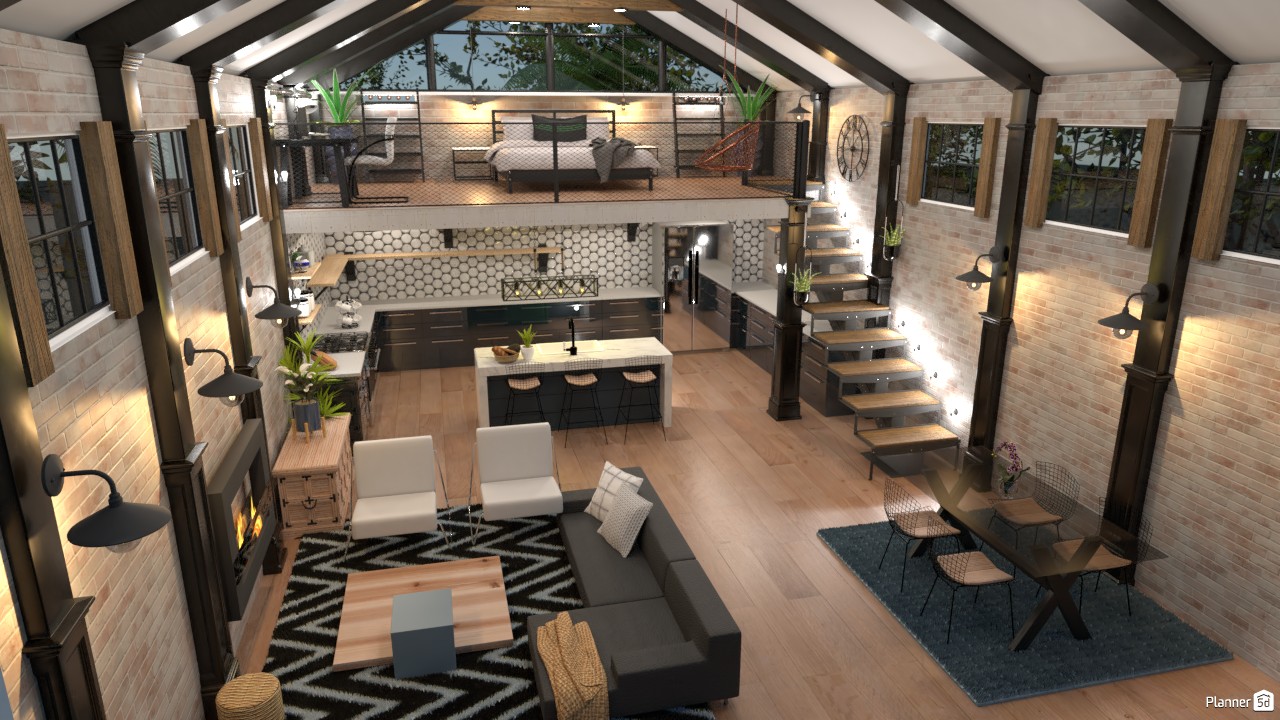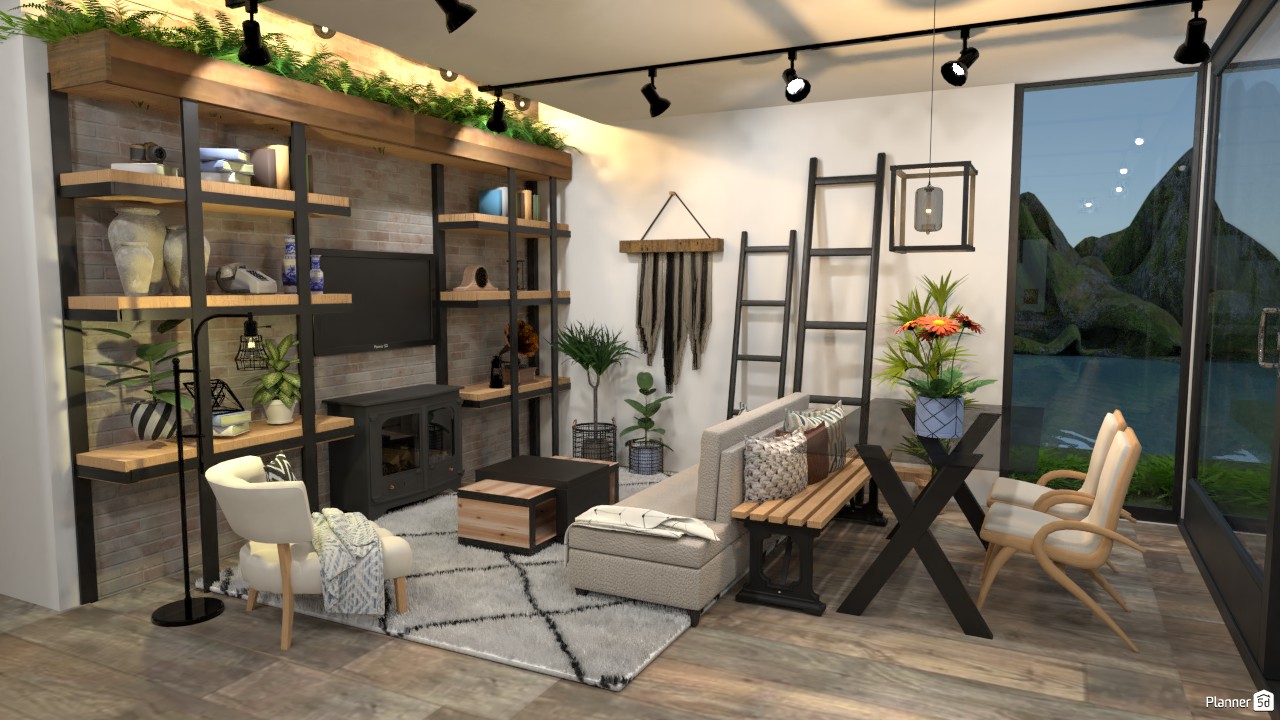The raw allure of industrial design has transcended its factory origins to become one of the most sought-after aesthetic movements in contemporary home decor. This design philosophy celebrates the beauty of unfinished surfaces, exposed structural elements, and the honest functionality that once defined manufacturing spaces. Today’s homeowners are increasingly drawn to this aesthetic’s ability to create spaces that feel both authentic and effortlessly sophisticated.
Industrial charm isn’t about recreating a warehouse in your living room; it’s about thoughtfully incorporating elements that speak to craftsmanship, durability, and purposeful design. The movement represents a rebellion against overly polished interiors, instead embracing materials and forms that tell stories of their origins. From reclaimed wood beams to weathered metal fixtures, each element contributes to a narrative of authenticity that resonates with our desire for genuine, unpretentious living spaces.
The appeal extends beyond mere aesthetics. Industrial design principles emphasize functionality and longevity, qualities that align perfectly with sustainable living practices. When you choose industrial elements, you’re often selecting pieces built to last generations, created from materials that age gracefully rather than deteriorate. This approach to home design reflects a broader cultural shift toward valuing quality over quantity, substance over superficiality.
Textural Storytelling Through Materials
The foundation of industrial charm lies in the thoughtful selection and combination of materials that carry history within their surfaces. Weathered brick walls become focal points that anchor entire rooms, their varied tones and textures creating visual interest that no manufactured material can replicate. These surfaces don’t just provide backdrop; they actively participate in the room’s emotional landscape, offering warmth and character that modern materials struggle to achieve.
Metal elements serve as the connective tissue in industrial design, appearing in everything from light fixtures to furniture legs. The patina on aged copper pipes, the subtle rust on iron beams, and the smooth polish of steel surfaces create a material symphony that speaks to different eras of industrial innovation. These metals don’t hide their nature; instead, they celebrate the marks of time and use as badges of authenticity.
Wood plays an equally crucial role, particularly reclaimed lumber that bears the scars and character marks of its previous life. Salvaged factory floors become dining tables, old barn beams transform into floating shelves, and weathered planks create accent walls that instantly add depth and warmth to any space. The combination of these materials creates layers of visual and tactile interest that invite exploration and touch.
Concrete surfaces have evolved from purely utilitarian applications to become design statements in their own right. Polished concrete floors reflect light while maintaining their industrial edge, while concrete countertops offer both durability and distinctive character. The material’s ability to be molded into custom shapes while retaining its raw aesthetic makes it particularly valuable for creating unique architectural features.
Lighting as Architectural Drama
Industrial lighting fixtures serve dual purposes as both functional elements and sculptural statements. The beauty of industrial lighting lies in its honest construction—exposed bulbs, visible wiring, and substantial hardware that makes no attempt to hide its mechanical nature. These fixtures often become room centerpieces, their substantial presence commanding attention while providing practical illumination.
Pendant lights fashioned from repurposed factory equipment bring immediate industrial credibility to any space. Whether crafted from old pulleys, salvaged metal shades, or reimagined machinery components, these fixtures create focal points that spark conversation while serving practical needs. The scale and weight of these pieces contribute to the substantial feeling that defines successful industrial interiors.
Track lighting systems embrace the exposed-element philosophy while offering flexibility for highlighting artwork, architectural features, or task-specific areas. The visible tracks and adjustable fixtures become part of the room’s design vocabulary rather than elements to be hidden or disguised. This approach celebrates the mechanical aspects of lighting while providing practical solutions for modern living needs.
Floor and table lamps in industrial settings often feature adjustable arms, exposed mechanisms, and substantial bases that anchor them visually within the space. These pieces frequently draw inspiration from workshop and factory lighting, bringing the purposeful aesthetic of work environments into residential settings. The result is lighting that feels both functional and sculptural, contributing to the space’s overall narrative.
Furniture with Function-Forward Philosophy
Industrial furniture design prioritizes honest construction and multi-functional capability over decorative flourishes. Tables built from reclaimed wood tops and steel pipe bases exemplify this approach, offering surfaces that can withstand daily use while contributing to the room’s aesthetic story. The visible joinery and exposed hardware become design elements rather than details to be concealed.
Seating options in industrial spaces often feature metal frames combined with leather or canvas upholstery that ages gracefully with use. Bar stools with adjustable heights and swiveling mechanisms celebrate their mechanical nature while providing practical functionality. These pieces don’t shy away from their utilitarian origins; instead, they embrace the beauty found in purposeful design.
Storage solutions follow similar principles, with open shelving units constructed from steel frames and wood or metal shelving. These systems make their contents part of the room’s visual composition while providing essential organization. The transparent nature of this storage approach requires thoughtful curation but rewards users with displays that contribute to the space’s overall aesthetic.
Vintage industrial furniture pieces, when available, bring immediate authenticity to modern spaces. Factory carts become mobile coffee tables, metal lockers provide unique storage solutions, and workbenches transform into kitchen islands. These repurposed pieces carry their history within their construction, offering stories that new reproductions cannot replicate.

Color Palettes that Enhance Rather than Compete
The color philosophy in industrial design centers on neutral tones that allow materials and textures to take center stage. Deep grays, warm blacks, and rich browns provide sophisticated backdrops that complement rather than compete with the natural colors found in aged metals, weathered wood, and worn leather. These darker tones create dramatic contrast with lighter elements while maintaining the moody atmosphere that defines industrial aesthetics.
Accent colors, when used, tend toward muted versions of traditional hues. Burgundy leather, forest green textiles, and deep navy fabrics provide color interest without disrupting the overall harmony. These choices reflect the practical color preferences of industrial settings while offering enough variety to prevent monotony.
The strategic use of white and cream tones can brighten industrial spaces without compromising their character. Exposed white-painted brick walls, cream-colored vintage textiles, and whitewashed wood elements introduce lightness while maintaining textural interest. This approach proves particularly effective in smaller spaces where darker palettes might feel overwhelming.
Natural color variations within materials provide much of the visual interest in industrial spaces. The varied tones in reclaimed wood, the subtle color shifts in aged metals, and the natural patina that develops on different surfaces create organic color palettes that feel both sophisticated and unpretentious.
Heat Distribution with Heritage Appeal
Modern heating solutions can seamlessly integrate with industrial design principles while providing efficient warmth distribution throughout the home. Contemporary radiator designs embrace the exposed-element philosophy that defines industrial aesthetics, turning necessary heating components into decorative features. The Paladin Clarendon Column Radiator exemplifies this approach, offering substantial visual presence while delivering reliable heating performance that complements the honest functionality that industrial design celebrates.
Traditional column radiators echo the mechanical honesty of industrial design while providing modern efficiency and temperature control. These units don’t attempt to hide their function; instead, they celebrate their role in home comfort through substantial construction and purposeful design. The visible pipes, substantial frames, and mechanical controls become part of the room’s industrial vocabulary.
Cast iron radiators, whether vintage or contemporary reproductions, bring immediate industrial credibility while offering superior heat retention and distribution. Their substantial weight and prominent presence align perfectly with industrial design principles, creating focal points that serve practical needs while contributing to the space’s overall aesthetic narrative.
Conclusion
Incorporating industrial charm into your home requires more than simply adding metal furniture and exposed light bulbs. Success lies in understanding the philosophy behind industrial design—the celebration of honest materials, functional beauty, and authentic construction. This approach creates homes that feel substantial and genuine, spaces that age gracefully while providing comfort and functionality for daily living.
The industrial aesthetic offers a refreshing alternative to trends that prioritize appearance over substance. By embracing materials that show their history, furniture that celebrates its construction, and lighting that makes no attempt to hide its mechanical nature, you create spaces that feel both timeless and contemporary. The result is a home that reflects values of authenticity, durability, and purposeful design—qualities that never go out of style.
The journey toward industrial charm is ultimately about creating spaces that feel honest and unpretentious while providing the comfort and functionality that modern life demands. Whether through subtle material choices or bold architectural statements, industrial elements can transform any home into a space that celebrates both form and function in equal measure.


